Sometimes, tragedy happens in silence. A person passes away alone, and no one notices right away. Days, maybe even weeks, go by.
Meanwhile, nature takes its course. The body begins to break down, releasing fluids and strong odors that don’t just linger—they spread. Walls, floors, and furniture absorb the damage.
Harmful bacteria and pests move in, making the home unsafe. The longer it goes unnoticed, the worse it gets. By the time someone discovers what happened, the cleanup can be overwhelming.

Most people think cleaning is simple—grab some soap, water, and maybe a little disinfectant. But in situations like this, regular cleaning just isn’t enough. The dangers run deeper than what you can see or smell.
When a body decomposes, biological fluids don’t just stay on the surface. They seep into:
As these fluids spread, bacteria and pathogens grow. The smell isn’t just unpleasant—it’s a warning sign of harmful biohazards in the air and on surfaces.
Without proper cleanup, these dangers can make people sick and cause long-term damage to the property.
Trying to clean it up without professional help can make things worse. Scrubbing or using household cleaners can spread contamination instead of eliminating it. Plus, without industrial-grade odor neutralizers, the smell can linger for months—or even years.
That’s why professionals like Bio-One are essential. Using advanced tools and proven techniques, they:
With experts handling the cleanup, property owners and tenants can focus on moving forward instead of dealing with the dangers left behind.

Unattended death cases present unique challenges for insurance adjusters. Unlike fire or water damage, decomposition introduces biohazards that can spread far beyond the immediate area.
The policyholder—whether a homeowner, landlord, or property manager—may be dealing with an emotionally overwhelming situation, making clear communication and guidance essential.
Coverage for biohazard cleanup depends on how the policy is written. Adjusters must determine:
Unattended deaths are distressing for policyholders, and adjusters are often the first point of contact. Managing these claims requires both technical expertise and compassion. Here’s how adjusters can help:
By understanding the complexities of decomposition cleanup and guiding policyholders through the process, adjusters can make a difficult situation easier while ensuring proper risk management for the insurer.

Unattended deaths aren’t just difficult—they’re delicate. As an insurance adjuster, you’re assessing property damage and guiding a policyholder through one of the most challenging moments of their life. The process can be overwhelming for them, full of questions about coverage, costs, and what comes next. That’s where Bio-One steps in.
At Bio-One of Flagstaff, we understand that this isn’t just another claim. It’s someone’s home, someone’s responsibility, and often, someone’s loss. We aim to make your job easier by handling the biohazard cleanup efficiently, professionally, and compassionately.
We work directly with both insurance adjusters and policyholders to ensure a smooth, stress-free process.
We take care of everything so that adjusters can focus on claim resolution. Our services include:
Insurance adjusters shouldn’t have to handle biohazard cases alone. With Bio-One, you get a partner who understands the sensitive nature of these claims and works efficiently to clean the property while keeping policyholders informed and supported.
We ensure everything is handled carefully so you can focus on what you do best.
If you’re handling an unattended death claim, let Bio-One be your trusted cleanup resource. We’re here to help every step of the way.
An unattended death occurs when someone passes away alone and their death remains undiscovered for an extended period. This can lead to significant biohazard risks due to decomposition.
Decomposition releases biological fluids and harmful bacteria that seep into flooring, walls, and furniture. Professional biohazard cleanup ensures complete decontamination, odor removal, and proper sanitization to prevent health hazards.
No, DIY cleaning can spread contamination and expose you to biohazards. Household cleaning products are not strong enough to neutralize harmful bacteria and odors. Professional cleanup is required to restore safety.
Coverage depends on the policy. Some insurance plans classify biohazard cleanup under property damage or crime scene cleanup, while others may exclude it. Check with your insurer or work with Bio-One to determine coverage.
Decomposition fluids can soak into carpets, subfloors, drywall, and even HVAC systems, causing extensive damage and requiring specialized cleaning, decontamination, and repairs.
Insurance adjusters assess the extent of contamination, determine coverage, and guide policyholders through the claims process. They may also work with biohazard remediation teams like Bio-One for damage assessments and cleanup documentation.
The duration of the cleanup depends on the severity of the situation. Bio-One responds quickly and typically completes decontamination within a few days, but structural repairs may take longer.
Yes, Bio-One provides detailed reports, before-and-after photos, and itemized invoices to assist adjusters and policyholders in processing claims efficiently.
Improper cleanup can leave harmful bacteria, lingering odors, and structural damage. This can pose serious health risks to future occupants and decrease the property’s value.
Bio-One works directly with adjusters to assess damage, provide cleanup estimates, and ensure compliance with health regulations. Our fast response times and thorough documentation make claim approvals easier and quicker.
Navigating Hoarding Disorder Together: Support Strategies for Families
At Bio-One of Flagstaff, we’re acquainted with the journey that brought you here. We understand you’ve already been trying to solve this problem alone—and we’re proud of you. It’s tough. You’ve been struggling out of concern for the hoarder, for you, for your family, for the property… and the list can go on.
Hoarding is complicated and messy. But you already know that.
After 20+ years of hoarding cleanup, we’ve made some observations and learned some lessons we’d like to share with you—because we feel they might help you and the hoarder.
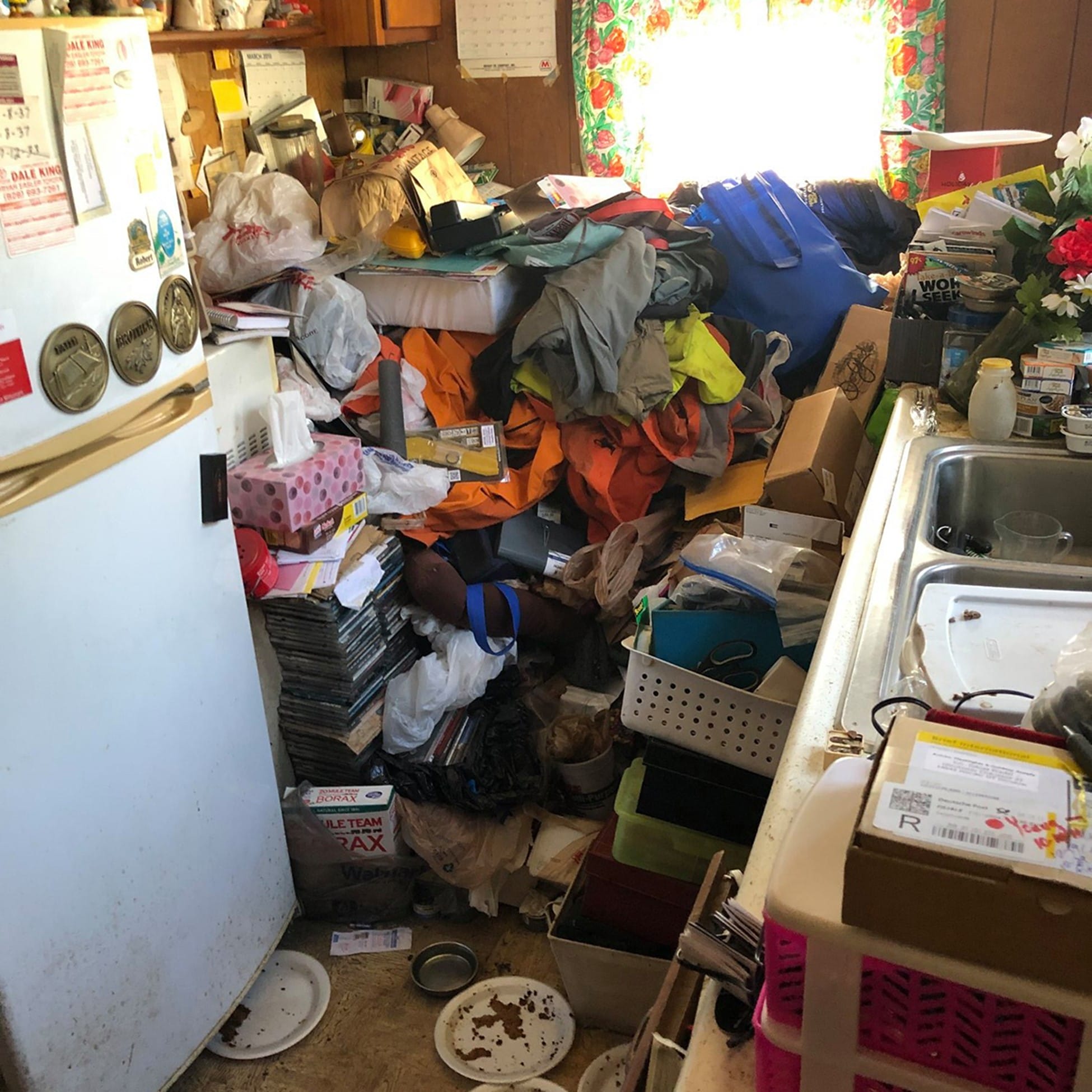
On the outside looking in, you see clutter, chaos, and conditions that are unhealthy and hazardous, such as:
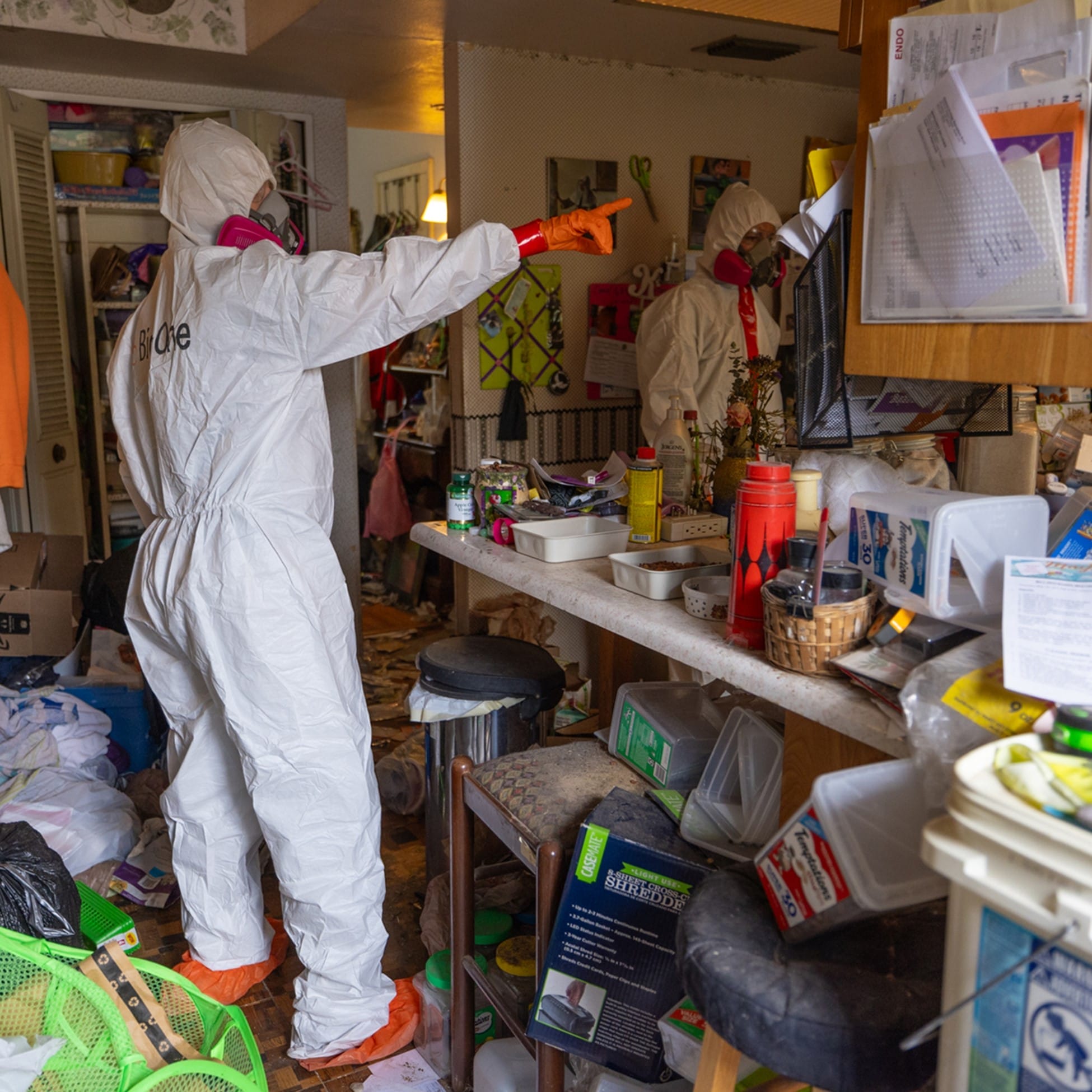
On the inside, however, you see a person—a family member—struggling and probably isn’t consciously choosing to live this way.
Hoarders hoard for various complex reasons, and the exact cause can vary from person to person. Hoarding is recognized as a mental health disorder known as "hoarding disorder."
It's essential to understand that hoarding is not just a matter of being messy or disorganized; it involves deeply ingrained thoughts, behaviors, and emotions.
Some of the primary reasons why hoarders hoard include:

When dealing with hoarding behavior, every experience of trying to help can unfold uniquely, filled with challenges and lessons.
It is not uncommon for the initial attempt to be met with resistance. Hoarding is more than just a clutter issue; it manifests deep-seated emotional, psychological, and sometimes physical struggles. Recognizing this is a crucial first step before embarking on the journey of helping a hoarder.
The journey is rarely linear. There are often setbacks where progress might seem to reverse. Stressful events or emotional lows could trigger this.
Not great, right?
When dealing with a hoarder and cleaning up their belongings, you might experience a range of complex and intense emotions.
Here are some common feelings and emotions you may go through:
It's important to acknowledge that these emotions are normal when dealing with hoarding. Consider seeking therapy or support groups to help manage these feelings and learn effective strategies for assisting your loved one in addressing the hoarding disorder.

When you approached the hoarder about their hoarding, the hoarder may have experienced a wide range of emotions and reactions.
These can include:
Appraising a hoarder with empathy, understanding, and patience is essential. Hoarding disorder is a complex mental health condition, and hoarders often need professional intervention and support to address their underlying issues.
Consider involving therapists, counselors, or hoarding cleanup specialists to facilitate productive conversations and provide guidance on the path to recovery.
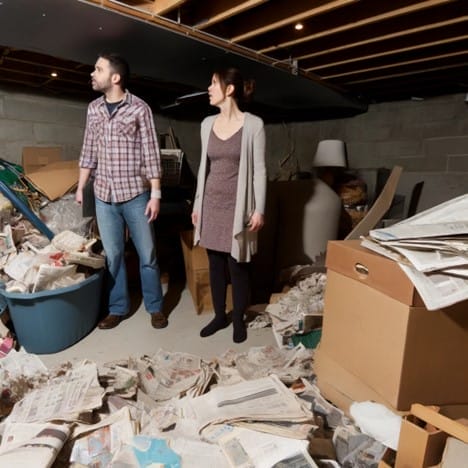
It's essential to understand how to provide support effectively. Hoarding Disorder often leads to a refusal of help, which can be frustrating for family members. To make a difference in your loved one's life, it's crucial to comprehend why they are reluctant to accept assistance.
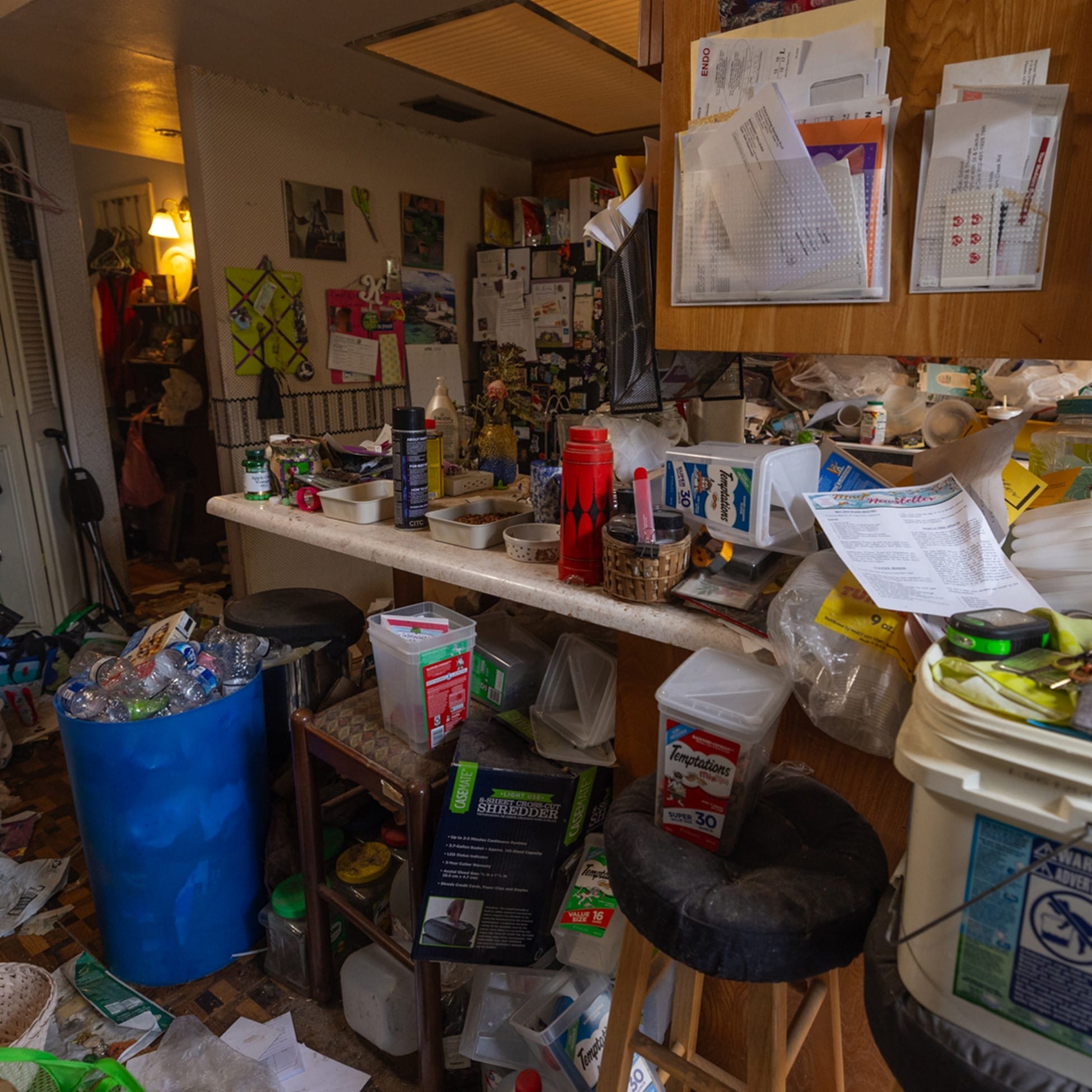
There are no shortcuts or one-size-fits-all solutions to dealing with hoarding disorder. It's a complex issue with deep-rooted psychological factors and emotional complexities. However, as you've embarked on this journey as a concerned family member or a friend, you've already taken a significant step.
You've shown care, patience, and understanding, and that's commendable. Remember, you're not alone in this journey. There are resources, support groups, and professionals who specialize in hoarding disorder and its treatment.
At Bio-One, we've witnessed countless stories of transformation. We've seen homes go from chaos to cleanliness, and we've watched individuals recover from hoarding disorder.
The key is persistence and empathy. Understand that recovery may be slow, with ups and downs, but every small step counts. Seek professional guidance, involve therapists, and educate yourself about the condition. Your loved one needs your support more than ever.
Ultimately, remember that hoarding is not a reflection of failure but a manifestation of deeper struggles. By approaching it with compassion and determination, you can help your loved one find a path to healing and reclaim their life.
For immediate expert hoarding cleanup service, contact Bio-One of Flagstaff today at (928) 863-8276. Your health and peace of mind are our top priorities. Let our professional local team help you restore your environment to a safe and clean condition.
Hoarding cleanup requires specialized training to handle the complexities safely and effectively, such as removing hazardous materials and navigating challenging environments.
Hoarding cleanup involves dealing with large volumes of items, potential hazards, and emotional challenges beyond regular cleaning.
Potential hazards include mold, pests, structural damage, sharp objects, and hazardous chemicals.
While family members may assist, professionals are better equipped with the tools and knowledge to handle hoarding situations safely.
The duration depends on the severity and size of the hoard, but professionals work efficiently to restore safety and cleanliness as quickly as possible.
Professionals aim to conduct the cleanup process respectfully and compassionately, working closely with the homeowner to make informed decisions.
Skilled teams follow strict protocols to safely identify, handle, and dispose of hazardous materials in compliance with regulations.
They often undergo specialized training in handling hazardous materials, biohazards, and cluttered environments to ensure safe and effective cleanup.
Legal issues regarding property rights and safety regulations can arise, so it's vital to consult professionals familiar with them.
A: Approach the situation empathetically and encourage them to seek professional help to assist with the cleanup and any underlying issues.
Losing a loved one is always hard. But when someone passes away alone, it brings extra challenges. Families must handle their grief and difficult decisions about what comes next.
An unattended death—when someone dies without anyone around—can go unnoticed for days or even weeks. This guide will help you understand the risks, the cleanup process, and the emotional steps after such a loss.
Why Unattended Deaths Are So Difficult
When someone passes away alone, several things can happen:
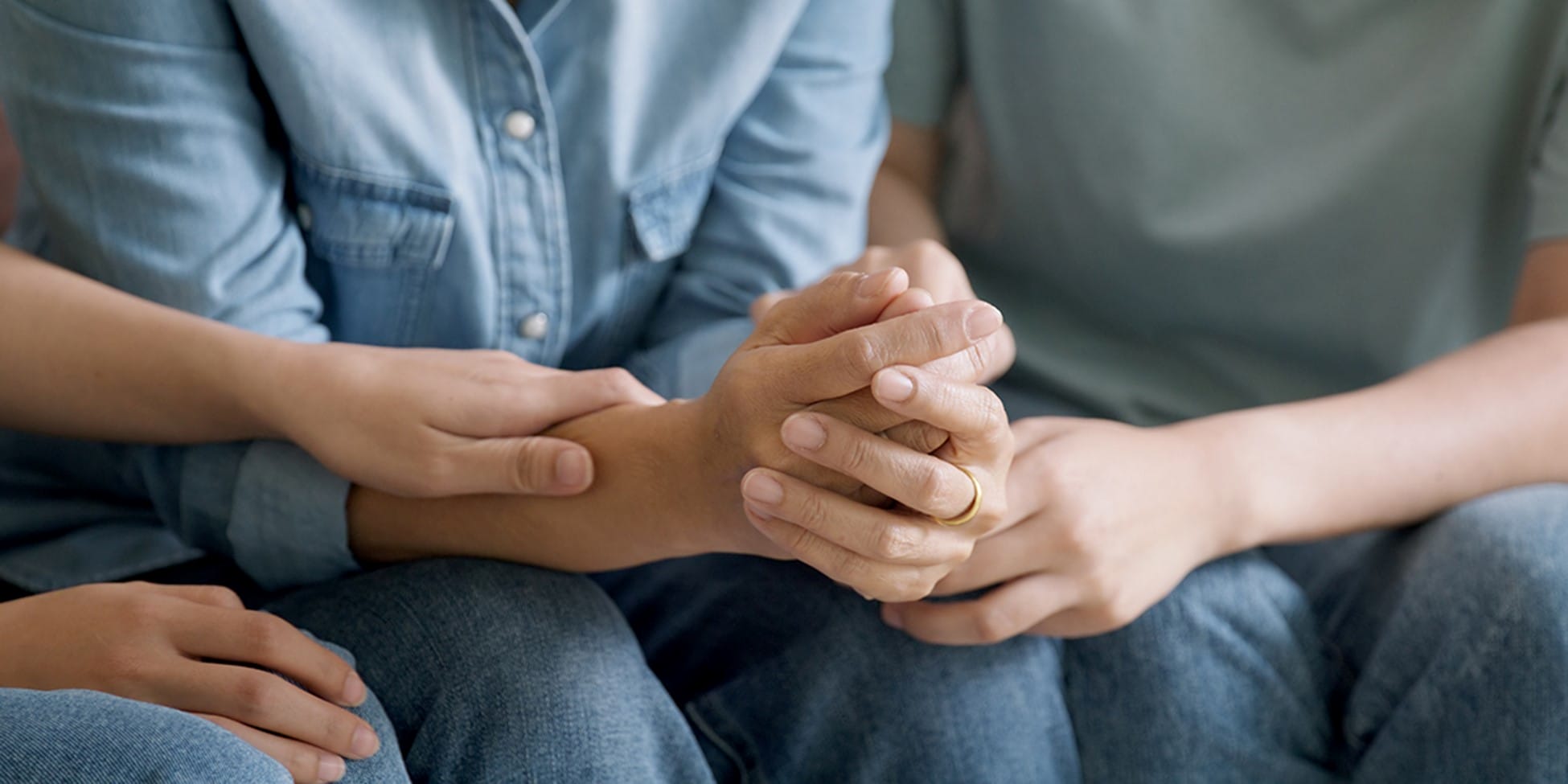
The Hidden Dangers of Unattended Death
When a body decomposes, it releases fluids, bacteria, and gases that can spread disease and damage property. Here’s what families should know:
These risks make professional cleanup a must.
Why You Should Never Attempt Cleanup Yourself
Many people think they can clean up an unattended death themselves. But this is not only dangerous—it can make the situation worse.
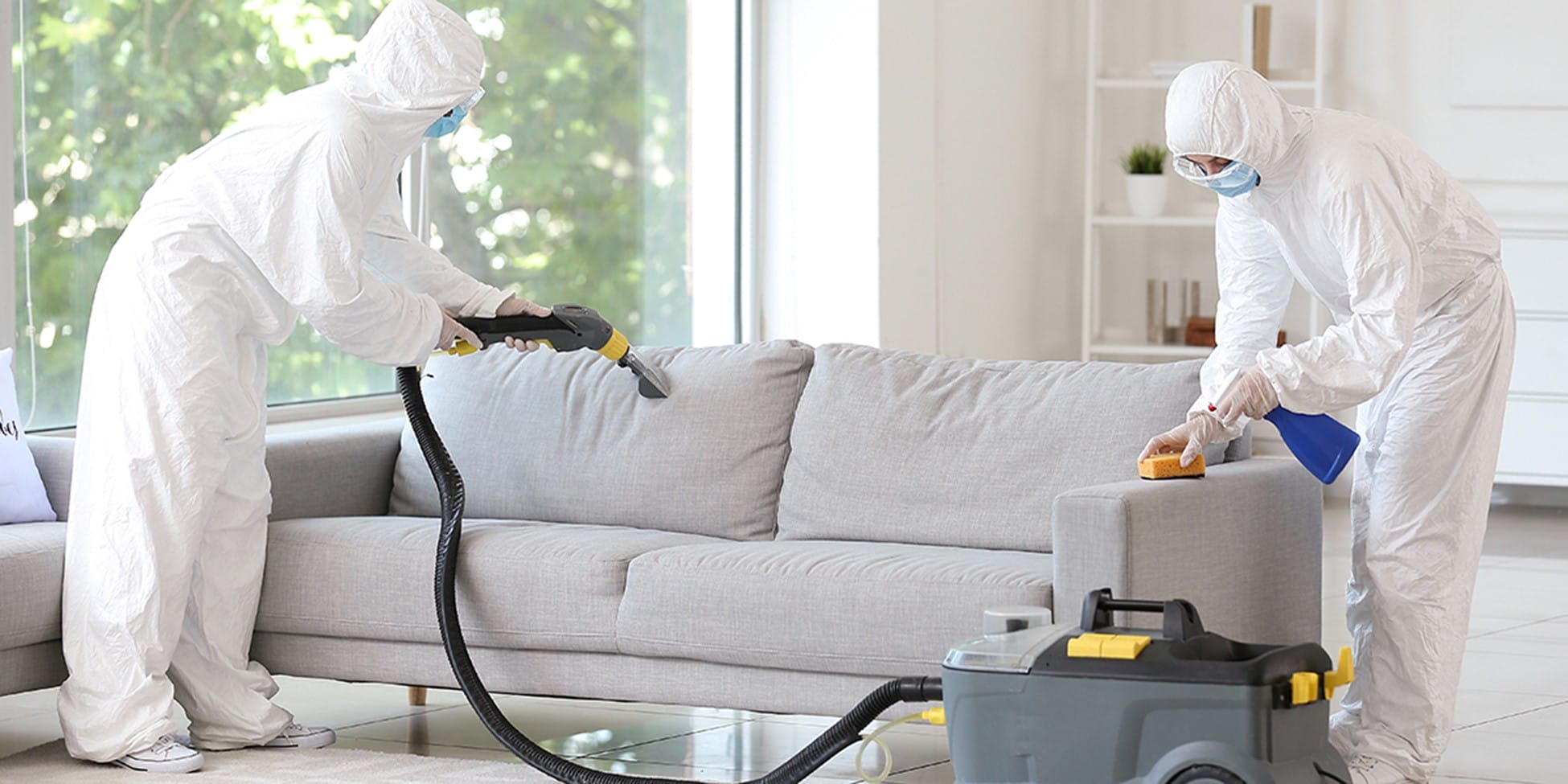
The Role of Bio-One’s Professional Cleanup Services
Hiring a professional Bio-One team helps protect your health, your home, and your well-being. Here’s what they do:
What to Do Immediately After Discovering an Unattended Death
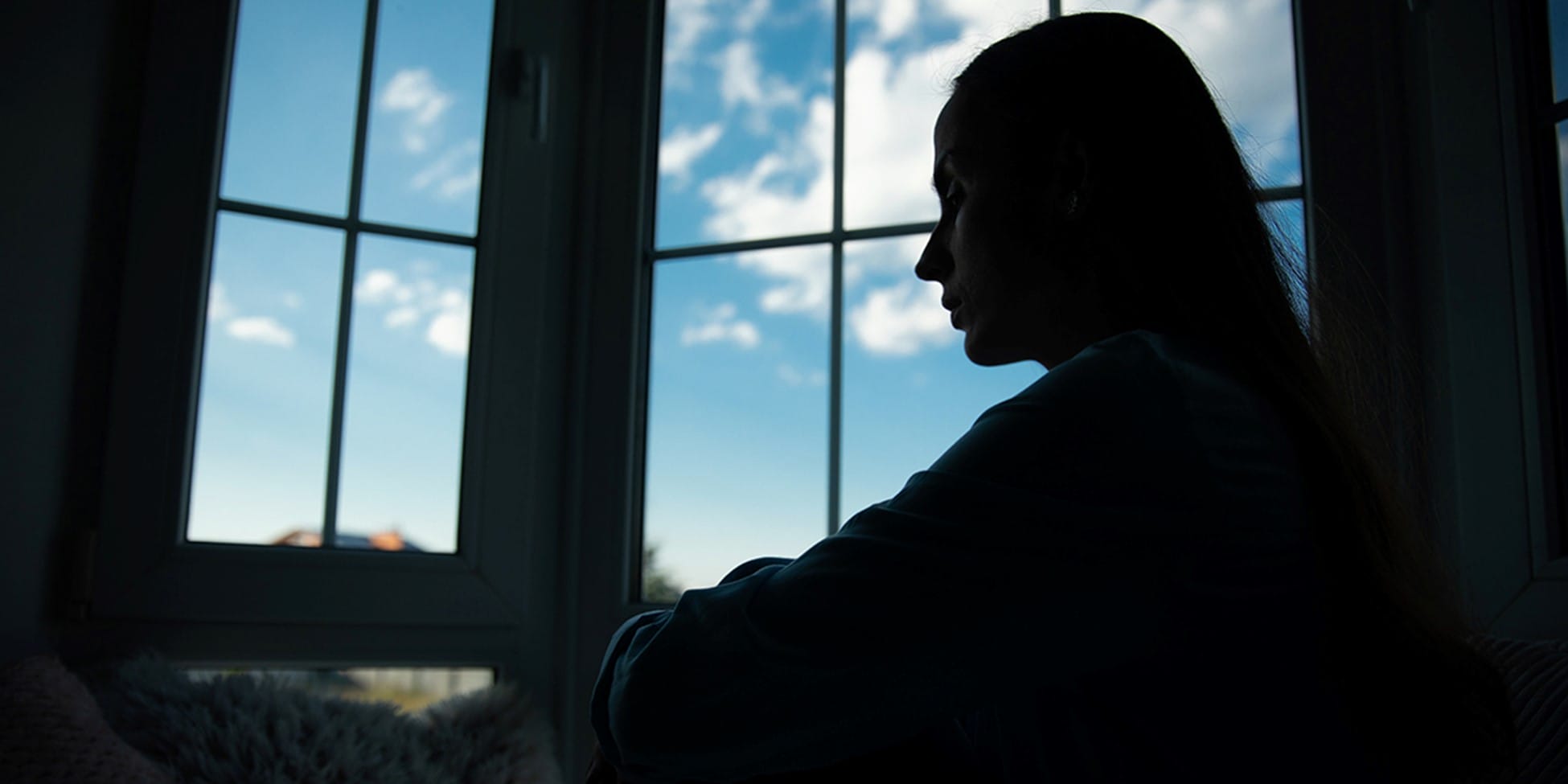
Coping with Grief After an Unattended Death
Grief after an unattended death is different. You may feel shock, guilt, or regret. Healing takes time, but these steps can help:
An unattended death can be devastating, but families don’t have to face it alone. Bio-One can restore the space, while grief counselors and support groups can help with emotional healing.
With time, care, and the proper support, families can begin to heal and move forward while honoring their loved one’s memory.
FAQ
What is an unattended death?
An unattended death is when someone dies without anyone around—it can go unnoticed for days or even weeks.
Why is professional cleanup necessary after an unattended death?
Professional cleanup is essential due to the health risks posed by biohazards, such as bodily fluids and decomposition, which can carry harmful pathogens and contaminate the environment.
What are the health risks associated with an unattended death?
Health risks include exposure to bacteria, bodily fluids, gases, and airborne pathogens, which can lead to infections and other serious health issues if improperly handled.
What property damage can result from an unattended death?
Property damage may include stains and corrosion from bodily fluids, mold, mildew growth, structural damage to floors and walls, and contamination of personal belongings.
Can families attempt to clean up after an unattended death themselves?
It is strongly discouraged. Decomposing bodies poses biohazard risks, and improper cleanup can lead to further contamination and health issues. Certified professionals use their training to handle such situations safely and legally.
How do professional cleanup services handle the biohazards after an unattended death?
Cleanup services use specialized equipment, EPA-approved disinfectants, and personal protective equipment (PPE) to safely remove biohazardous materials and sanitize the affected area.
What steps should families take immediately after discovering an unattended death?
Families should contact local authorities, avoid attempting to clean the area themselves and seek assistance from professional biohazard cleanup services.
How can families cope with the emotional trauma of an unattended death?
Families can seek grief counseling, join support groups, and memorialize their loved one through tributes and ceremonies to help process the loss and begin healing.
How does the cleanup process help families move forward?
By handling the physical cleanup, professionals relieve families of the emotional burden of dealing with biohazards, allowing them to focus on emotional healing and recovery.
What additional support do professional cleanup services provide after an unattended death?
In addition to cleanup, many services offer assistance with insurance claims, provide grief counseling referrals, and help guide families through the emotional and practical challenges of the situation.
Insurance adjusters are critical in managing complex and often emotionally charged claims. Whether dealing with the aftermath of a crime scene, an unattended death, a hoarding situation, or a hazardous spill, they must ensure that affected properties are cleaned and restored efficiently while adhering to strict safety and regulatory standards.
Selecting the right biohazard cleanup partner is not just about hiring a cleaning company—it’s about finding a professional team that understands the urgency, documentation requirements, and legal considerations associated with biohazard remediation.
Not all biohazard cleanup companies operate at the same expertise, professionalism, or compliance level. A qualified partner helps streamline the claims process, minimizes liability risks, and ensures that all cleanup efforts meet health and environmental regulations.
These questions will ensure you’re working with a reliable, certified, and experienced team that handles sensitive cases with care and efficiency.

Biohazard cleanup is not the same as standard cleaning. It involves exposure to potentially infectious materials, including blood, bodily fluids, drug residues, and hazardous waste.
If not handled properly, biohazard contaminants can pose serious health risks to residents, property owners, and even the cleanup crew. Improper handling or disposal can also lead to legal and regulatory consequences for insurance companies and property owners.
Working with an untrained or uncertified company increases the risk of cross-contamination, liability issues, and non-compliance penalties.
When selecting a biohazard cleanup company, insurance adjusters should verify that the team is properly trained and certified in handling hazardous materials. Key certifications and qualifications to look for include:
Insurance adjusters should ask for proof of certification and ongoing training to ensure that cleanup technicians remain current with the latest safety protocols and best practices.
At Bio-One, we take training and compliance seriously. Our technicians undergo rigorous certification programs, including:
By choosing Bio-One, insurance adjusters can be confident that they are working with a trusted, fully certified biohazard cleanup team that prioritizes safety, compliance, and professionalism in every job.
Insurance adjusters are responsible for processing claims quickly and efficiently while ensuring all services are necessary, properly documented, and within policy guidelines. A biohazard cleanup company unfamiliar with the insurance claims process can create unnecessary delays, incomplete paperwork, or billing discrepancies, complicating the adjuster’s job.
By working with a cleanup partner experienced in insurance documentation, direct billing, and industry regulations, adjusters can ensure a smoother claims process and reduce stress for all parties involved.
Insurance adjusters should verify that the biohazard cleanup company they work with has direct experience handling insurance claims, including:
At Bio-One, we work closely with insurance adjusters to streamline the claims process and reduce administrative burdens. Our experience in handling biohazard-related insurance claims allows us to provide:
By partnering with Bio-One, insurance adjusters gain a trusted, experienced biohazard remediation partner who understands the importance of documentation, efficiency, and compliance in claims.
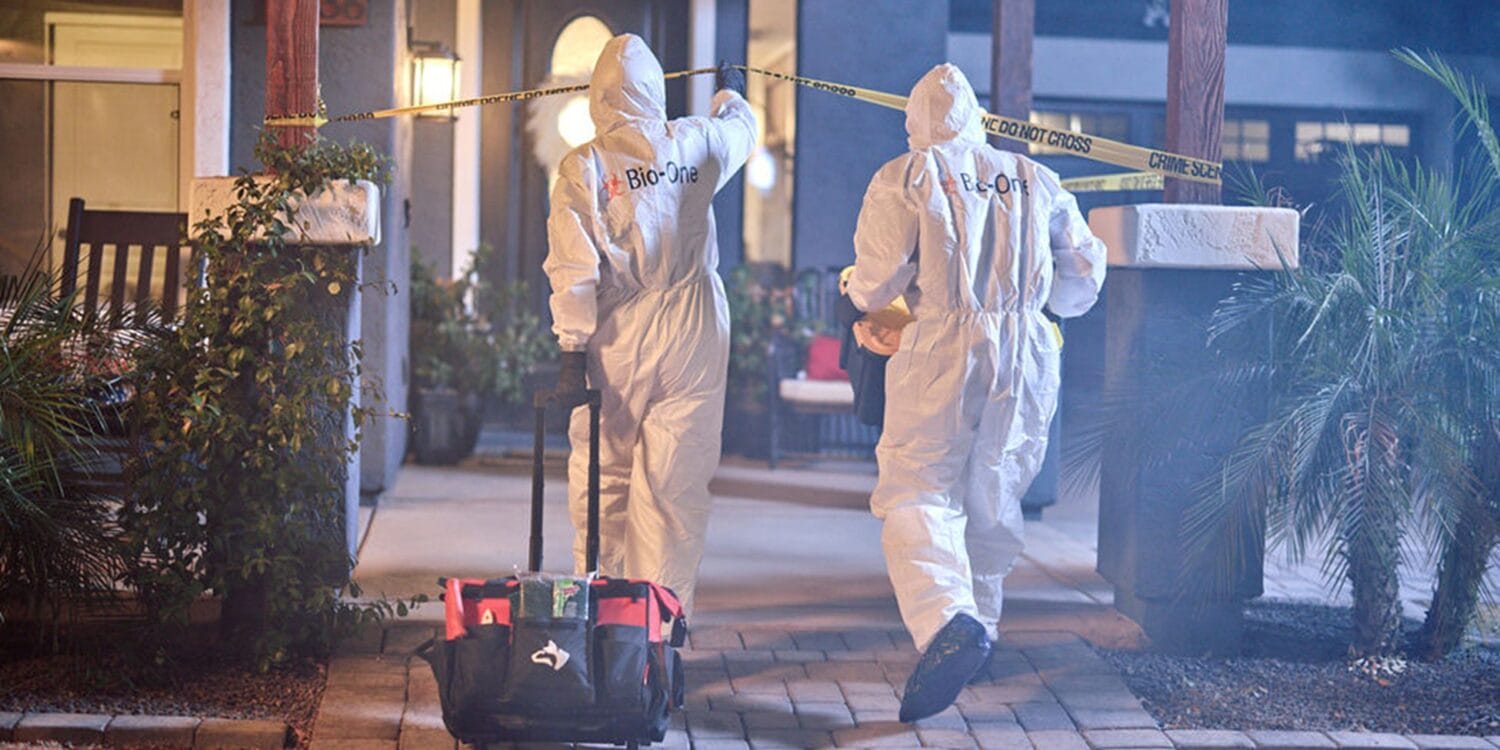
In biohazard situations, time is critical. Whether dealing with an unattended death, a crime scene, a hoarding situation, or a sewage backup, the longer biohazardous materials remain on-site, the greater the risk to health, safety, and property integrity.
For insurance adjusters, a fast-acting cleanup partner reduces claim complexity, limits secondary damage, and helps clients return to normalcy faster.
When choosing a biohazard cleanup company, insurance adjusters should ensure they provide:
At Bio-One, we understand that biohazard emergencies require immediate action. That’s why we offer:
By choosing Bio-One, insurance adjusters can trust that their clients will receive immediate, expert care, minimizing further damage and ensuring claims are handled quickly and efficiently.
Biohazardous materials—including blood, bodily fluids, infectious waste, and contaminated materials—cannot be treated like regular trash. Improper handling, transport, or disposal of these substances can result in:
For insurance adjusters, working with a biohazard cleanup company that follows proper disposal procedures ensures compliance, prevents liability risks, and protects all parties involved.
When vetting a biohazard cleanup company, insurance adjusters should confirm that the company:
At Bio-One, safety and compliance are our top priorities. We strictly follow all federal, state, and local biohazard disposal regulations, ensuring that every job is handled with the utmost care.
By choosing Bio-One, insurance adjusters can trust that biohazardous materials will be handled safely, legally, and efficiently, reducing liability risks and ensuring a fully restored environment.
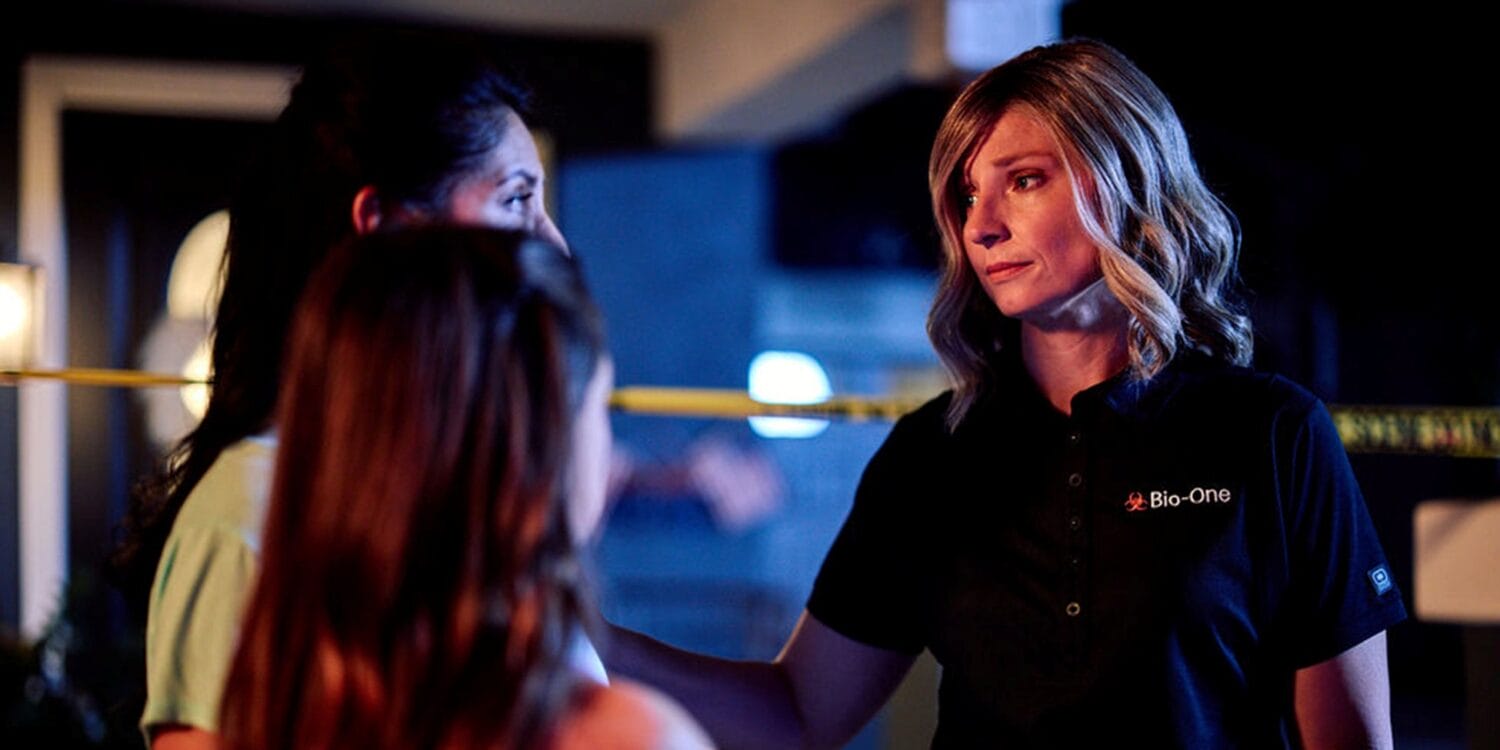
Biohazard cleanup is more than just a technical job—it often involves deeply emotional and traumatic situations. Whether responding to a crime scene, an unattended death, a suicide, or a hoarding situation, cleanup crews are often working in the homes and businesses of individuals who are grieving, in distress, or facing significant hardship.
For insurance adjusters, choosing a compassionate, professional, and discreet biohazard cleanup partner ensures that affected individuals receive support during a difficult time while protecting the property owner's or business's reputation.
When selecting a biohazard cleanup company, insurance adjusters should ensure that the team demonstrates:
At Bio-One, we understand that our work goes beyond cleaning—it’s about helping people during some of the most challenging moments of their lives. We approach every job with compassion, discretion, and professionalism to support those affected.
By partnering with Bio-One, insurance adjusters can ensure clients receive expert biohazard cleanup services with the care and respect they deserve, providing peace of mind during an incredibly challenging time.
Biohazard cleanup often involves more than simply removing hazardous materials. Some cases—hoarding situations, crime scenes, trauma events, and severe property neglect—require a full range of remediation services to restore a property to a livable or business-ready condition.
Working with a full-service remediation company simplifies the claims process for insurance adjusters. It reduces the need for multiple vendors and ensures that the property is completely restored in a coordinated effort.
When selecting a biohazard cleanup company, insurance adjusters should seek a partner that offers a comprehensive suite of services, including:
At Bio-One, we provide end-to-end remediation services, ensuring that properties are cleaned and restored to a safe and habitable condition.
By partnering with Bio-One, insurance adjusters can streamline claims by working with a single, trusted provider that offers both biohazard removal and complete property remediation. This ensures clients receive the most thorough and professional service possible.
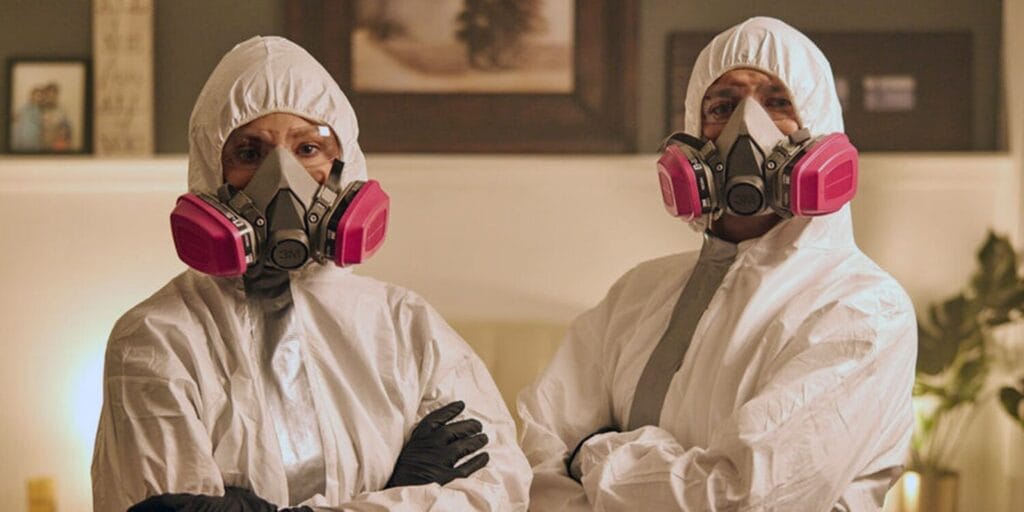
Selecting the right biohazard cleanup partner ensures a smooth and efficient claims process. Insurance adjusters must navigate complex cases involving health risks, regulatory requirements, and emotional sensitivities, so working with a qualified and experienced remediation team is essential.
By carefully vetting biohazard cleanup companies with key questions—about certifications, insurance expertise, emergency response times, regulatory compliance, discretion, and additional services—adjusters can avoid delays, compliance issues, and costly mistakes.
A trusted biohazard remediation partner doesn’t just clean up hazardous materials; they streamline documentation, reduce liabilities, and provide both adjusters and property owners peace of mind.
At Bio-One, we check all the boxes—offering:
By partnering with Bio-One, insurance adjusters gain a dependable ally who understands biohazard claims' urgency, complexity, and sensitivity. Our experience, responsiveness, and commitment to excellence make us the preferred choice for insurance professionals nationwide.
A qualified biohazard cleanup team should have certifications in Bloodborne Pathogens Training, Hazardous Materials Handling, OSHA Compliance, and adherence to EPA and state disposal regulations. These certifications ensure they follow safety protocols and legal requirements.
Yes, Bio-One has extensive experience working with insurance adjusters. We provide thorough documentation, itemized invoices, and direct insurance billing to streamline the claims process and reduce the administrative burden.
Bio-One offers 24/7 emergency response and can dispatch trained technicians within hours to prevent further contamination, reduce health risks, and ensure a rapid cleanup process.
Working with an untrained or uncertified company can lead to improper decontamination, cross-contamination risks, legal and regulatory penalties, and increased liability for insurance adjusters and property owners.
We strictly follow OSHA, EPA, and state regulations, working with licensed medical waste disposal facilities to safely transport and dispose of biohazardous materials.
Bio-One provides hoarding cleanup, odor removal, sewage and water damage remediation, crime scene decontamination, trauma cleanup, and infectious disease disinfection.
Our team arrives in unmarked vehicles, follows trauma-informed training, and communicates with sensitivity and respect. We prioritize privacy and work discreetly to minimize further distress for those affected.
Adjusters should verify certifications, check for experience in handling insurance claims, confirm emergency response capabilities, review compliance with disposal regulations, and assess the company’s reputation for professionalism and discretion.
Fentanyl has become a significant concern for law enforcement agencies across the country as its presence continues to rise in communities of all sizes.
This potent synthetic opioid is not only responsible for a growing number of overdose deaths but also presents a grave occupational hazard for officers encountering it during arrests, traffic stops, evidence collection, and other duties.
The risks associated with fentanyl exposure go far beyond the crime scene - officers face potential health emergencies from accidental contact or inhalation, even in small amounts.
The danger lies in fentanyl’s extreme potency - up to 100 times stronger than morphine and 50 times stronger than heroin. Just a few milligrams, an amount barely visible to the naked eye, can cause severe respiratory distress, unconsciousness, or worse. When improperly handled, fentanyl can contaminate vehicles, evidence rooms, and even personal gear, creating ongoing risks for officers and those around them.
As the fentanyl crisis intensifies, understanding how to manage exposure and properly handle contaminated environments has become essential for officer safety. Professional cleanup services, equipped with the right expertise and tools, are critical in neutralizing these hazards and preventing further risks.
Here’s what every officer and law enforcement agency needs to know about the dangers of fentanyl exposure and the indispensable role of professional decontamination services in protecting those who protect our communities.
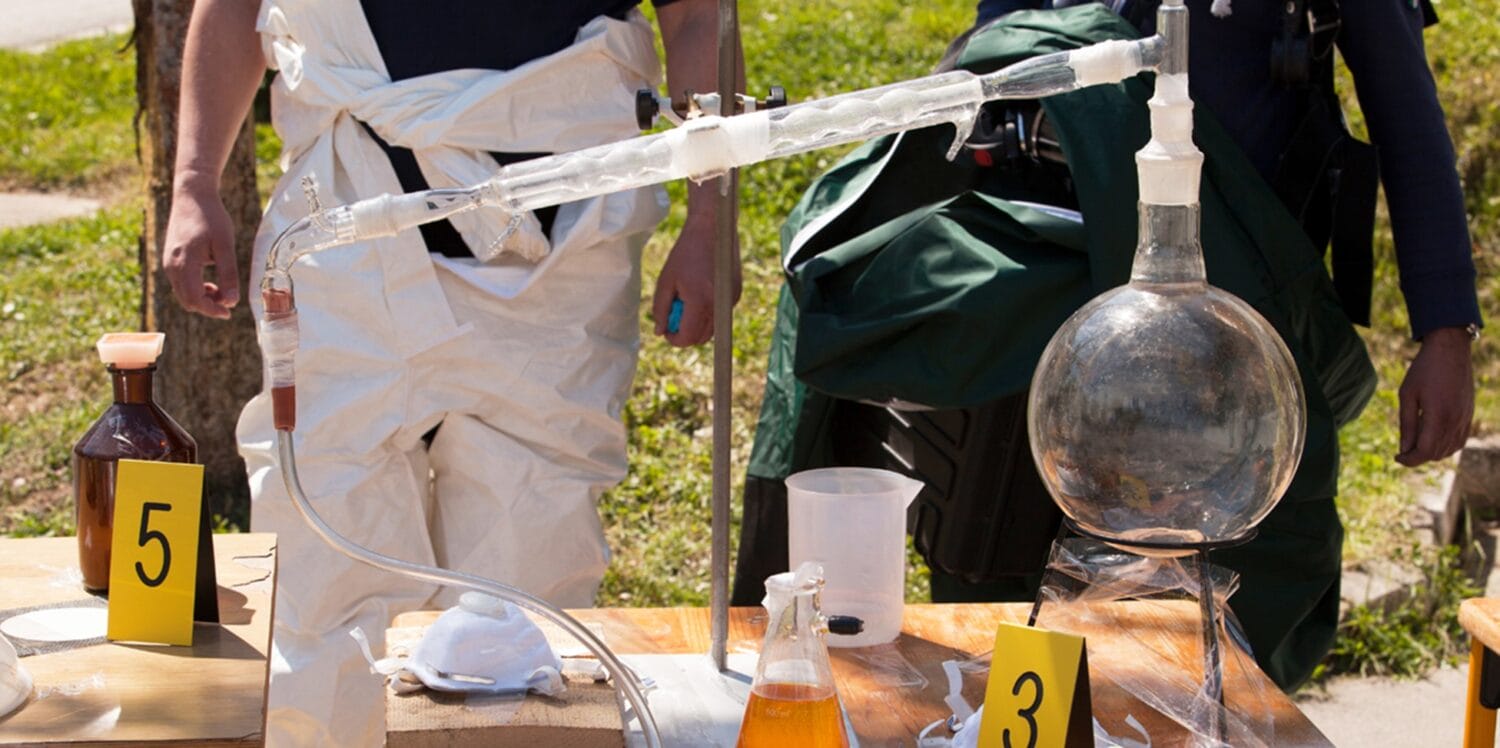
Fentanyl exposure presents a silent but severe threat to law enforcement officers who encounter this potent opioid in their line of duty.
Its extreme potency and ability to contaminate environments pose unique challenges that require heightened awareness and proactive measures. Here are the primary dangers of fentanyl exposure and why addressing them promptly is critical:
Fentanyl particles can become airborne with minimal disturbance, creating an invisible hazard for officers during routine operations such as:
Even after initial contact, fentanyl can continue to pose a threat through secondary exposure. Common scenarios include:
The effects of fentanyl exposure can appear quickly and escalate rapidly. Early symptoms include:
These risks underscore the importance of preparedness, including access to naloxone (Narcan), which can reverse fentanyl overdoses but must be administered promptly.
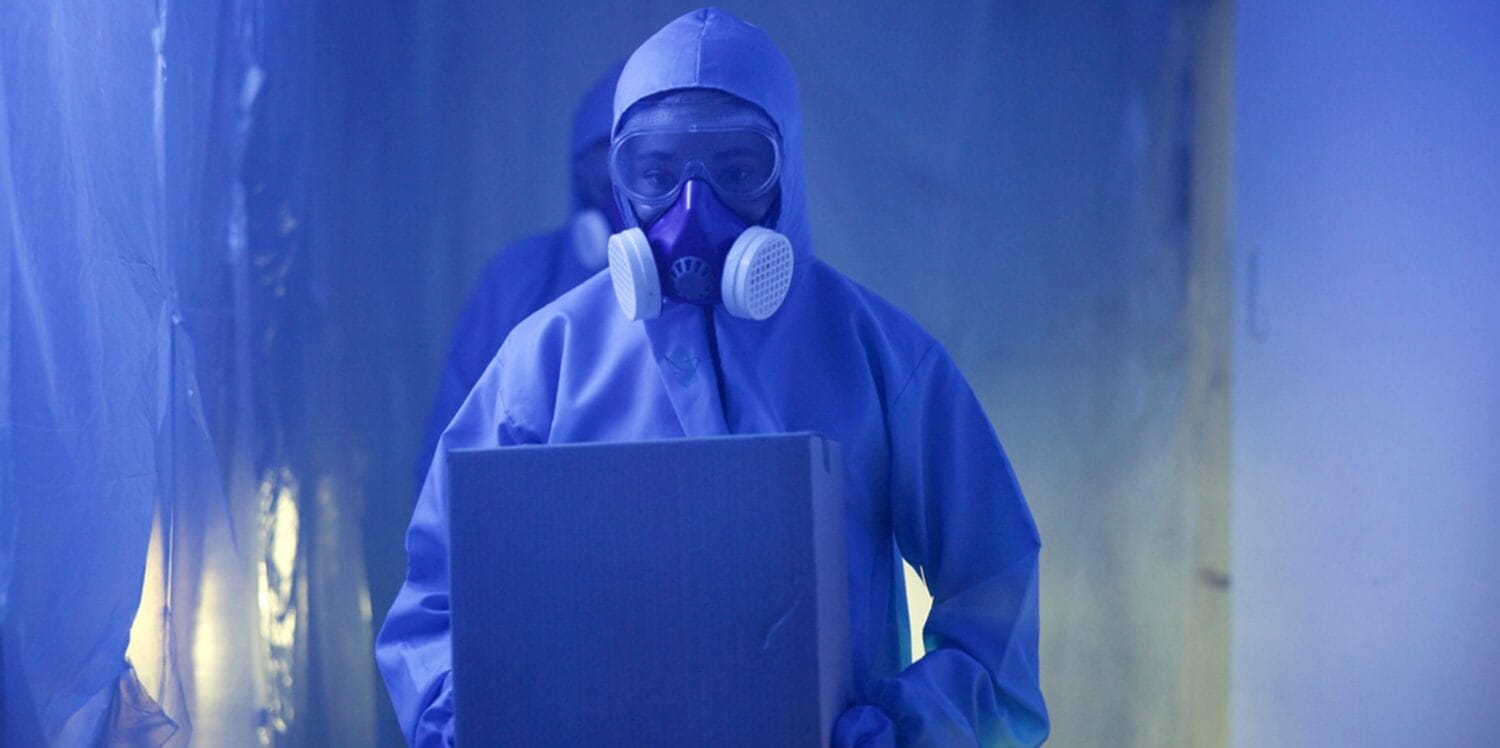
When fentanyl contamination occurs, the stakes are incredibly high. Professional cleanup services go beyond simple cleaning—they provide the specialized expertise, tools, and compliance necessary to protect law enforcement officers and the communities they serve.
Here’s why partnering with trained biohazard remediation professionals like Bio-One is essential:
Professional cleanup services utilize cutting-edge tools and methods explicitly designed to handle dangerous substances like fentanyl. This ensures comprehensive decontamination and minimizes risks for everyone involved. Key advantages include:
This thorough approach is critical in contaminated environments, such as squad cars, evidence rooms, and personal gear.
Fentanyl cleanup must adhere to strict regulatory standards to avoid legal or operational complications. Professional remediation ensures compliance with:
This focus on compliance safeguards officers and their departments from liability while maintaining public trust.
Fentanyl’s persistence on surfaces means inadequate cleanup can result in ongoing exposure, putting officers and others at risk long after the initial incident. Professional services eliminate these dangers by:
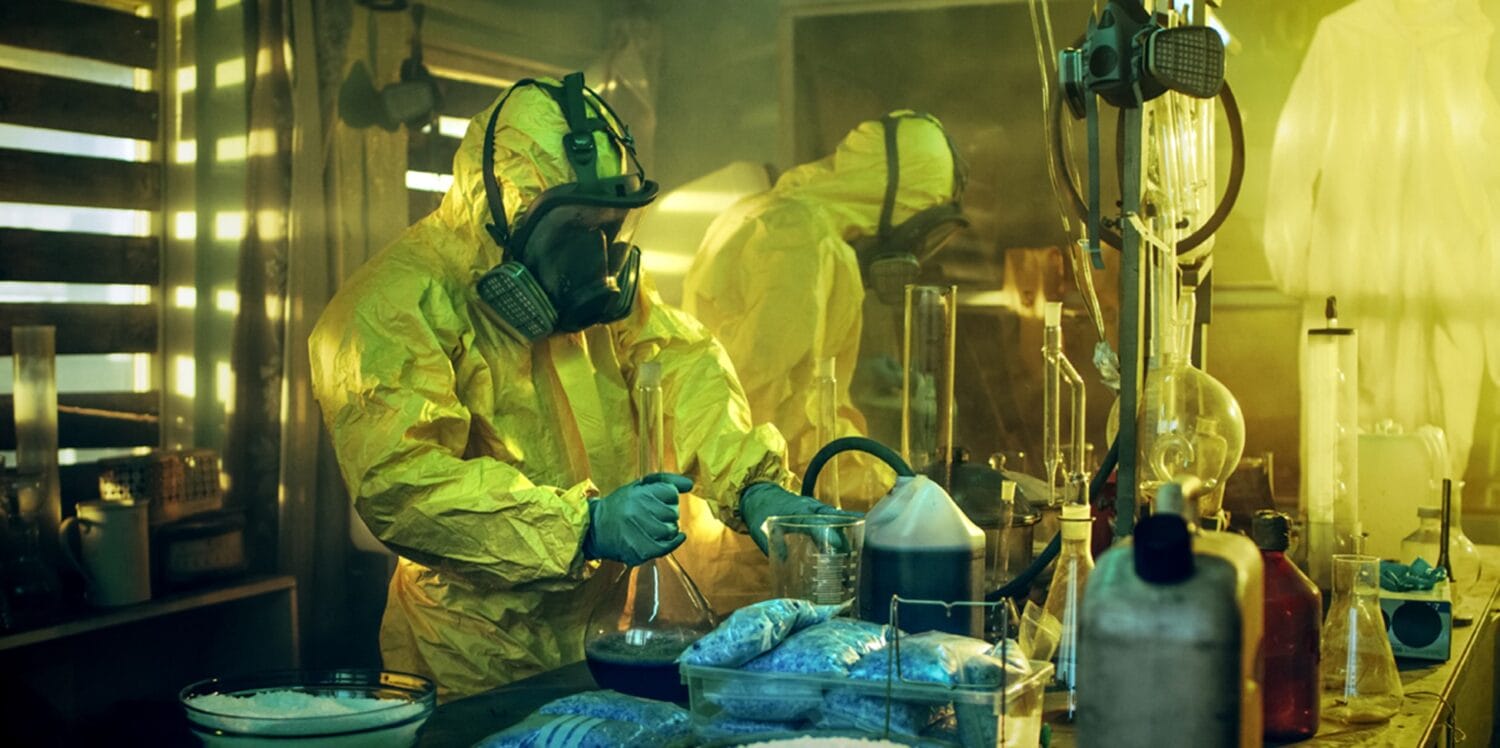
When fentanyl contamination threatens the safety of law enforcement personnel, swift, thorough, and professional action is essential. Bio-One brings unparalleled expertise to biohazard cleanup, addressing the unique challenges faced by officers on the front lines.
Here’s how Bio-One supports law enforcement with tailored solutions that prioritize safety, efficiency, and peace of mind:
Bio-One takes a meticulous approach to removing fentanyl contamination from every affected area, ensuring no trace is left behind. Our services include:
Time is of the essence when dealing with fentanyl contamination. Bio-One understands the urgency and provides:
Bio-One’s team consists of highly trained professionals with extensive experience in hazardous materials cleanup. Our qualifications include:
Beyond cleanup, Bio-One is a committed partner to law enforcement agencies, offering:
Regarding fentanyl contamination, Bio-One is more than a cleanup service—we’re a trusted partner dedicated to safeguarding the health and safety of law enforcement personnel. With our expertise, rapid response, and commitment to excellence, you can confidently face fentanyl challenges. Let us help you focus on your mission while we handle the hazards.
Fentanyl is a synthetic opioid up to 100 times stronger than morphine. Even microscopic amounts can cause severe respiratory distress, unconsciousness, or overdose if inhaled, ingested, or absorbed through the skin.
Officers can encounter fentanyl during arrests, evidence collection, or traffic stops. It can become airborne or transfer to their skin through contaminated objects, increasing the risk of accidental exposure.
Early symptoms include dizziness, confusion, and respiratory distress. In severe cases, exposure can lead to unconsciousness or life-threatening overdose.
Professional cleanup ensures that all fentanyl residues are neutralized using advanced tools, techniques, and protective measures, minimizing the risks of exposure and cross-contamination.
Squad cars, evidence rooms, and personal gear are often contaminated areas that require thorough decontamination to prevent secondary exposure.
Bio-One uses specialized equipment, cleaning agents, and certified protocols to safely remove fentanyl contamination from affected environments and ensure their safety.
Cleanup must comply with OSHA guidelines, environmental regulations, and agency-specific protocols to ensure safety, legality, and operational integrity.
Bio-One meticulously cleans every surface, crack, and crevice to eliminate all traces of fentanyl, preventing long-term exposure risks.
Yes, Bio-One offers 24/7 rapid response services to address fentanyl contamination promptly, minimizing downtime and exposure risks.
In addition to cleanup, Bio-One offers consultative support, training resources, and long-term partnerships to help agencies develop safe protocols and manage future fentanyl-related risks.
Squad cars are more than just vehicles -they are vital lifelines in law enforcement. Whether rushing to a scene, transporting detainees, or serving as mobile offices for officers, these cars endure constant use and high-pressure situations. Their critical role comes with hidden challenges, particularly concerning contamination.
Every shift introduces the potential for exposure to bodily fluids, drug residues, and other biohazards. Blood from an injured detainee, traces of powerful narcotics like fentanyl, or airborne pathogens from someone with a contagious illness can all turn a squad car into a health risk.
These contaminants jeopardize the safety of officers and can also harm detainees, technicians, and anyone who comes into contact with the vehicle.
Unfortunately, many of these hazards are invisible to the naked eye and cannot be addressed with standard cleaning methods. Therefore, regular, professional biohazard cleanup is essential in maintaining the health and safety of law enforcement personnel and the public they serve.
By investing in specialized cleanup services, departments can ensure that their fleet is operational and the environment is safe for everyone.

Law enforcement vehicles face unique challenges due to their constant exposure to high-risk situations. While they serve as vital tools for officers, the conditions they encounter can create environments teeming with invisible dangers. These biohazards often go unnoticed during routine cleanings, leaving officers, detainees, and maintenance staff vulnerable to severe health risks.
Squad cars frequently encounter contaminants that pose significant health and safety risks, including:

Relying on in-house cleaning for law enforcement vehicles may seem cost-effective and efficient. Still, it often falls dangerously short in addressing the unique and complex biohazard risks squad cars face. Without specialized training, equipment, and protocols, these efforts can leave critical hazards unresolved, putting officers, detainees, and others at risk.
No matter how well-intentioned, DIY cleaning methods cannot match the effectiveness of professional biohazard cleanup services. Professionals ensure:
Investing in professional cleaning services is not just about maintaining cleanliness—it’s about protecting lives and ensuring that law enforcement vehicles remain safe for all users.

Overlooking proper biohazard cleanup in squad cars isn’t just an oversight - it’s a liability. From the health and well-being of officers to the legal and operational stability of law enforcement departments, the consequences are far-reaching and potentially devastating. A proactive approach to vehicle decontamination safeguards everyone involved.
Addressing these risks through professional biohazard cleanup is an investment in safety and efficiency:
By recognizing the importance of professional decontamination, departments can create a safer environment for all while maintaining the trust and confidence of their community.
Regarding addressing biohazard contamination in squad cars, Bio-One is the premier choice for law enforcement agencies. Our specialized expertise, cutting-edge techniques, and unwavering commitment to safety make us the trusted partner for decontaminating vehicles and ensuring their safety for all occupants.

Choosing Bio-One means partnering with a company dedicated to excellence and safety. Our mission is to provide law enforcement agencies with:
When the safety of your team and community is at stake, trust the experts at Bio-One to deliver unmatched results. Together, we can ensure that every squad car remains a secure and hygienic space for those who serve and those they protect.
Common biohazards include bodily fluids (blood, vomit, urine), drug residues (such as fentanyl or methamphetamine), bacteria, viruses, and unseen contaminants like used needles or contaminated personal belongings.
Professional cleanup ensures thorough decontamination of all surfaces, eliminates microscopic pathogens and toxins, and adheres to safety and regulatory standards, reducing health risks for officers and detainees.
No, standard cleaning methods often fail to eliminate pathogens and residues at a molecular level, leaving behind invisible threats that can jeopardize health and safety.
Risks include exposure to infectious diseases, accidental drug overdoses, legal liabilities from unsafe conditions, and operational disruptions caused by vehicle downtime.
Biohazard cleanup requires specialized training, medical-grade cleaning agents, professional-grade equipment, and personal protective equipment (PPE) like gloves, respirators, and hazmat suits.
Detainees exposed to residual substances or pathogens in contaminated vehicles risk infection, illness, or injury, particularly those with pre-existing health conditions.
Departments that fail to provide a safe vehicle environment may face lawsuits, worker’s compensation claims, and regulatory fines.
Professional services are efficient and thorough, ensuring vehicles are quickly returned to service without compromising the safety of officers or detainees.
Bio-One offers specialized expertise, advanced cleaning techniques, OSHA-compliant practices, and customized decontamination plans tailored to law enforcement needs.
Partnering with Bio-One ensures clean and safe squad cars, reduces legal and health risks, minimizes operational disruptions, and protects the well-being of officers and the community.

For immediate assistance with crime scene cleanup, contact Bio-One of Flagstaff 24/7 at (928) 863-8276 for discreet, compassionate services. Our local team is proficient and equipped to manage all traumatic situations effectively.
It’s unnerving if your property has become the scene of a crime. It might have been a crime directed at you, or your property was the location of a random crime. Either way, it’s a traumatic event for you and others.
To make matters worse, the crime might have resulted in biohazard contamination. Biohazards are biological materials that pose a threat to human health.
The following types of crimes often result in biohazardous conditions:
In all these scenarios, specialized cleaning and decontamination methods are required to restore the area and safely prevent other health risks.

If a crime resulting in a biohazard has occurred on your property, here are the steps you should take:

The cleaning of a crime scene is typically handled by specialized crime scene cleanup teams rather than law enforcement or crime scene investigators. These teams are trained in dealing with biohazardous materials and have the expertise to clean and disinfect areas affected by a crime safely. The process includes several key elements:
Crime scene cleanup teams operate with a high degree of professionalism and sensitivity. They understand the emotional and traumatic nature of their work, especially in cases involving violent crimes. They also ensure compliance with all relevant health and safety regulations.
In most cases, the property owner is responsible for arranging and paying for these services. However, some insurance policies may cover the costs associated with crime scene cleanup.

Without the right training, equipment, and cleaning solutions, your cleanup efforts may be inadequate, leaving harmful remnants behind. Considering the infrequent use and high cost of proper equipment and chemicals, self-cleaning isn't cost-effective.

Professional crime scene cleanup companies should possess several essential qualifications and attributes to safely and effectively handle their work's complex and sensitive nature. These include:
Managing a biohazardous crime scene extends beyond just the immediate cleanup. It involves understanding the risks, following the right procedures, and ensuring that the area is returned to a safe and habitable state. This process is about eradicating visible signs of crime and safeguarding the health and well-being of those who may come into contact with the area.
Dealing with a crime scene on your property is a multifaceted challenge. It requires a careful balance of immediate action, adherence to legal procedures, and emotional resilience. Following the steps outlined above, property owners can navigate these difficult waters with a clearer understanding and a sense of preparedness. Remember, the goal is to clean up, heal, and recover from the incident.
For immediate assistance with crime scene cleanup, contact Bio-One of Flagstaff 24/7 at (928) 863-8276 for discreet, compassionate services. Our local team is proficient and equipped to manage all traumatic situations effectively.
Tips when calling for cleanup.
What is involved in crime scene cleanup?
Crime scene cleanup involves removing and decontaminating biological and hazardous materials from a crime scene. This includes blood, bodily fluids, and tissue cleanup.
How much does crime scene cleanup cost?
The cost of crime scene cleanup varies depending on the extent needed, but it typically ranges from $1,000 to $5,000.
Are your crime scene cleanup services available 24/7?
Yes, we offer 24/7 emergency services to respond to crime scenes promptly.
Does insurance cover crime scene cleanup?
In some cases, homeowner's insurance or crime victim compensation programs may cover the cost of crime scene cleanup. It's advisable to check with your insurance provider.
How long does a typical crime scene cleanup take?
The time required for crime scene cleanup varies based on the severity of the scene. It can range from a few hours to several days.
Are your crime scene cleanup technicians trained and certified?
Our crime scene cleanup technicians undergo specialized training and certification to handle biohazardous materials and follow strict protocols safely.
What types of biohazards are cleaned during crime scene cleanup?
Crime scene cleanup addresses biohazards like blood, bodily fluids, tissue, and other potentially infectious materials.
Can I clean a crime scene myself?
It is strongly discouraged to clean a crime scene yourself due to the risk of biohazard exposure. It's safer to hire professional crime scene cleanup services.
How can I find a reputable crime scene cleanup company?
Look for companies with proper certifications, experience, and positive reviews. You can also ask for referrals from law enforcement or your insurance provider.
What safety measures are taken during crime scene cleanup?
Crime scene cleanup professionals wear personal protective equipment (PPE) and use specialized cleaning agents to ensure safety and thorough decontamination.

For immediate assistance with after-death cleanup, contact Bio-One of Flagstaff 24/7 at (928) 863-8276 for discreet, compassionate services. Our local professional cleanup team is proficient and equipped to manage traumatic situations effectively.
In the wake of losing a loved one, the world seems to pause, wrapped in a haze of grief and disbelief.
During this challenging and emotional time, the myriad of tasks and arrangements that need to be handled can feel insurmountable, a mountainous journey that one is ill-prepared to embark upon.
Yet, amidst the sorrow and the pain, these tasks beckon for attention, demanding a semblance of normalcy in a world turned upside down.
While specific circumstances surrounding a death can vary widely — from expected passings after long illnesses to sudden losses that leave us reeling — the essence of what needs to be done in the aftermath shares common threads.
This guide's purpose is not to add to the burden of your loss but to offer a gentle roadmap through the maze of practicalities that follow a loved one’s departure. This checklist serves as a starting point, a foundational guide to navigating the initial steps post-loss.
In the following sections, we will delve deeper into each item on the checklist, providing insights, tips, and resources to assist you at every step. Whether arranging the funeral, handling the deceased’s estate, or simply knowing your rights and the support available, this guide aims to lighten your load and offer clarity amidst confusion.
Let’s embark on this journey together, with compassion and understanding, as we explore the critical first steps after the loss of a loved one.

In the immediate aftermath of a loved one’s passing, one of the first considerations may be their wishes regarding organ donation. Giving can save or enhance the lives of many individuals, making it a significant decision.
Here’s how to proceed:
Begin by looking for official documentation indicating the deceased’s organ donation wishes. This is often found on a driver’s license, where a small symbol signifies their consent to be an organ donor. Additionally, an advanced healthcare directive or living will might contain specific instructions regarding organ donation.
If you discover that your loved one is an organ donor, it’s crucial to inform first responders, nurses, or doctors immediately. The timing is critical for organ donation, and healthcare professionals need to know as soon as possible to preserve the organs’ viability.
Organ donation is handled with the utmost respect and care for the donor and their family. It’s helpful to familiarize yourself with the process, including additional consent forms, discussions about which organs or tissues can be donated, and the steps involved in the donation procedure.
While it’s a profoundly personal decision, understanding the impact of organ donation can offer some comfort during this difficult time. Each organ donor can save up to eight lives, while tissue donations can significantly improve the lives of up to 75 people.
Making decisions about organ donation during a time of grief can be overwhelming. Don’t hesitate to seek support from hospital staff, organ donation organizations, or a trusted advisor who can provide information and guidance.
Ultimately, the decision to donate organs should align with the wishes of the deceased. If they had not expressed a decision about organ donation, the responsibility falls to the next of kin to make the decision, keeping in mind what they believe their loved one would have wanted.

When a loved one passes away at home without medical supervision, it’s crucial to know the immediate steps to take. This not only ensures that their death is legally documented but also that you’re guided through the initial stages of managing their passing.
Here’s what to do:
If the death was unexpected, your first step should be to call emergency services (911 in the United States). They will dispatch the necessary personnel to your location.
Clearly explain the situation to the operator, stating that your loved one has passed away at home and there was no medical supervision at the time of death. Provide any details about the deceased’s medical history or circumstances leading to their death that might be relevant.
The operator may provide specific instructions for you to follow. This could include not moving the deceased’s body or attempting to resuscitate if it’s clear the individual has passed away.
In many cases, especially if the death was unexpected, the police and medical personnel will be dispatched to the scene. They are involved in ensuring no foul play and documenting the occurrence officially.
Depending on the jurisdiction and circumstances of the death, a medical examiner or coroner may need to examine the body. If this is necessary, emergency services or the police will coordinate it.
The authorities on the scene will help guide you through the initial documentation needed. This might include a legal pronouncement of death, which is essential for funeral arrangements and the execution of the deceased’s will, and other legal matters.
Don’t hesitate to ask the responding authorities any questions you may have about the process. They can guide you through the immediate next steps, including who to contact next and how to handle the deceased’s body respectfully.
It’s understandably a highly emotional time, but try to remain calm and respectful as the authorities do their job. They are there to help you through this challenging moment and ensure everything is handled correctly and with dignity.

In the immediate aftermath of a loved one’s passing, ensuring the well-being of any dependents — whether children, elderly family members, or pets — is paramount. This adjustment period is critical, and managing their immediate needs with compassion and efficiency can help alleviate the stress during this challenging time.
Here’s how to approach it:
Finding a safe and comforting environment is essential if children are affected by the loss. Reach out to a close family member, friend, or caregiver whom the children know and trust. This person should be capable of providing care for at least 24–48 hours, allowing you time to manage immediate arrangements without added worry.
Depending on the children’s age, explain what has happened in a manner that is sensitive and appropriate for their understanding. Assure that they are being taken care of and that you will be there for them.
Consider these when making arrangements if the deceased had expressed specific wishes regarding who should care for their dependents or if unique family dynamics are at play. It’s important to honor these wishes as much as possible, provided they align with the best interest of the dependents.
Pets also feel the loss and may become anxious or stressed during this time. Arrange for them to stay with a friend, family member, or a pet care service that can give them the attention and care they need. Ensure the caregiver is informed about the pet’s routines, dietary needs, and medical conditions.
Ensure the temporary caregiver has all necessary information for children or pets, including emergency contact numbers, medical records, dietary restrictions, and favorite toys or comfort items. This helps maintain a sense of normalcy and comfort.
Ensure the children and the caregiver can reach you if needed. Open communication is critical to ensuring the dependents feel supported and cared for, even in your absence.
Use this time to start thinking about any long-term arrangements that might need to be made for the dependents’ care and well-being, especially in light of the family’s loss.

The task of informing others about the passing of a loved one is both delicate and necessary. It’s a step that invites support and shared grief but can also be emotionally taxing. Prioritizing who to contact immediately and who can wait is crucial in managing this task without becoming overwhelmed.
Here’s how to approach it:
Begin by contacting those closest to the deceased — spouses, children, siblings, and best friends. These individuals should hear the news from you directly rather than through social media or other indirect means.
For those in the closest circle, phone calls are the most personal and respectful way to convey the news. They allow for an immediate, compassionate exchange and offer an opportunity for mutual support.
If you find the task too overwhelming to manage, it is okay to ask a trusted family member or friend to help notify others. Choose someone close to the deceased who can handle the task with sensitivity.
After informing the immediate circle, list other friends, distant family members, colleagues, and acquaintances to contact. Organizing this list by priority or relation can help streamline the process.
Consider using email, text messages, or social media for the broader circle, especially if you need to notify a large group. A carefully worded message that conveys the news with respect can be appropriate. Remember to ask for discretion in spreading the news until all close family and friends have been personally informed.
People process grief in various ways. Be prepared for a range of emotions from those you notify, from shock and denial to immediate grief. Offer support where you can, and understand if some need space to process the news.
If funeral or memorial service details are available and you feel appropriate, you can share this information with those you notify. Otherwise, let them know that details will follow once arrangements have been made.
Remember notifying others also reminds you of your loss. It’s emotionally draining, so take breaks as needed and lean on others for support during this process.
Securing a legal pronouncement of death is a necessary formal step in the process following a loved one’s passing. This official declaration is the first legal recognition of death and is essential for many subsequent tasks, from arranging the funeral to settling the estate.
Here’s how to navigate this process:
A medical professional is responsible for pronouncing death. If the death occurred in a hospital or hospice, the attending physician would make the pronouncement. In cases where death occurs at home without medical supervision, a qualified professional such as a coroner or medical examiner may need to be involved.
Contact the attending physician, the hospital, or your local medical examiner’s office to obtain a legal pronouncement depending on where and how the death occurred.
Primarily, suppose the death occurred outside of a medical facility. In that case, the body might need to be examined by the medical examiner or coroner to determine the cause of death before a pronouncement can be made.
Once a death has been legally pronounced, you can request official death certificates from the hospital, physician, or your local vital records office or health department. These documents are crucial for many next steps in managing your loved one’s affairs.
Many institutions require an original death certificate to process changes after death (e.g., banks, insurance companies, and government agencies). Estimate how many copies you need and request them upfront to avoid delays. It’s not uncommon to need 10 or more copies.
The process for obtaining a legal pronouncement of death can vary significantly by location, especially regarding who is authorized to make the pronouncement and issue death certificates. Familiarize yourself with local laws and procedures to ensure compliance.
There may be a fee for each copy of the death certificate. While the initial cost might seem minor, it can add up if you require many copies. Plan for this expense in your budget.
Transparent and respectful communication can help streamline interactions with medical or government officials. Remember, these professionals are accustomed to assisting individuals in your situation and can often provide additional guidance.
In the immediate aftermath of losing a loved one, having a support system in place is crucial for both emotional and practical support. Grieving is a deeply personal process, yet it’s important to remember you don’t have to navigate this difficult time alone.
Here’s how to establish and utilize a support system effectively:
Identify family members and friends who can offer you emotional and practical support. Think about those who have been there for you in past times of need and who you feel comfortable relying on now.
Be open with your support network about what you’re going through and how they can help. Let them know whether you need someone to listen, help with funeral arrangements, or manage daily tasks like cooking or childcare.
Many tasks must be completed after a loved one’s death, from funeral arrangements to notifying banks. Divide these tasks among your support network based on each person’s strengths and availability. This approach helps manage the workload and allows everyone to contribute meaningfully.
Grief counselors, therapists, and support groups specialize in helping people navigate the complexities of grief. Don’t hesitate to reach out to these professionals for support. They can offer coping strategies, a compassionate ear, and a safe space to express your feelings.
Many communities have resources for grieving people, including support groups, workshops, and seminars. These resources can provide additional support and connections with others experiencing similar losses.
Sometimes, help comes from unexpected places. If someone offers assistance, consider accepting it. Whether a neighbor offering a meal or a colleague willing to handle some of your responsibilities, these gestures can provide significant relief.
Remember that taking care of yourself is not selfish. Grief can be physically and emotionally exhausting, so eating well, getting enough rest, and engaging in activities that nurture your well-being is crucial.
In moments of deep grief, it might be tempting to isolate yourself. However, staying connected with others, even in small ways, can provide a lifeline during this time. Regular check-ins with friends, family, or a support group can make a difference.
It’s essential to acknowledge the road you’ve embarked upon following the loss of a loved one. The journey through grief is deeply personal, marked by moments of profound sadness, reflection, and, eventually, healing. While the steps outlined in this guide aim to navigate the practical aspects of this journey, remember that the emotional and spiritual journey is equally important.
You may find moments of peace, healing, and hope as you continue your journey. Your loved one’s memory will always be a part of you, shaping your journey in ways seen and unseen. Embrace the journey ahead, with its myriad of emotions, as a testament to the love you shared and the resilience within you.
For immediate assistance with after-death cleanup, contact Bio-One of Flagstaff 24/7 at (928) 863-8276 for discreet, compassionate services. Our local professional cleanup team is proficient and equipped to manage traumatic situations effectively.
Resources For Those Left Behind After a Suicide Click here for suicide prevention and postvention resources.

For immediate professional hoarding cleanup service, contact Bio-One of Flagstaff 24/7 at (928) 863-8276. Your health and peace of mind are our top priorities. Let our expert local team help you restore your environment to a safe and clean condition.
When cleaning up a cluttered home, most people think of typical house cleaning tasks like dusting, vacuuming, and organizing. However, there's a significant difference between cleaning an untidy house and tackling the daunting task of hoarding cleanup.
Hoarding goes far beyond simple clutter and often presents complex challenges that require professional intervention.

One of the primary reasons hoarding cleanup is distinct from regular house cleaning is the presence of biohazard contamination. Biohazards can cause diseases in humans and can also cause other effects, such as poisonings, or provoke an allergic response.
Sometimes, hoarding animals (like cats) is part of the hoarder's compulsion. Animal hoardings are especially sensitive. Animal hoarding is unhealthy and dangerous for both the occupants of the space and the animals themselves. The combination of feces, urine, and unsanitary filth creates biohazards that risk the health of all living things in that space.
These biohazards found in a hoarder’s home pose serious health risks, including the spread of diseases and infections. Attempting to clean up such biohazards without proper protection can lead to serious health consequences.
Cleaning up biohazardous materials requires specialized training, equipment, and adherence to safety protocols. Professional hoarding cleanup teams are equipped with personal protective equipment (PPE), including masks, gloves, and suits to shield them from biohazard exposure. They follow strict protocols to ensure thorough decontamination and disposal, reducing the risk of disease transmission.
Hoarder homes provide ideal environments for pests and rodents to thrive. Accumulated clutter offers hiding spots and food sources for these unwanted guests. Rats, cockroaches, flies, and other pests are often lured to the house by animal waste and rotting food. These pests and rodents are biological agents that spread diseases to animals and humans living in these unsanitary conditions.
Rodent infestations are common in hoarding situations, with rodents finding shelter in the vast clutter and abundant food sources. Infestation of rodents in and around the home is the main reason disease spreads from rodents to people. In addition, these pests can cause structural damage and contaminate surfaces with feces and urine. Attempting to handle a rodent infestation during a hoarding cleanup without professional expertise can worsen the problem.
Removing pests without professional help can lead to inadequate solutions and potential harm. Professional hoarding cleaners are trained to identify and address pest infestations effectively. They use appropriate extermination methods and ensure that all infested areas are thoroughly cleaned and sanitized.
Hoarding environments often suffer from poor ventilation and excess moisture due to blocked windows and plumbing issues. These conditions create a breeding ground for mold. Mold growth is unsightly and hazardous to health, causing respiratory problems and allergies.
For some people, mold can cause a stuffy nose, sore throat, coughing or wheezing, burning eyes, or skin rash. People with asthma or who are allergic to mold may have severe reactions. Immune-compromised people and people with chronic lung disease may get lung infections from mold.
Mold spores are airborne and can quickly spread to other areas of the home, leading to extensive contamination. Attempting to address mold growth in a hoarding environment without proper training and equipment can result in inadequate removal and the potential for health issues.
Removing mold from hoarded spaces requires protective gear, specialized cleaning agents, and remediation techniques. Professional hoarding cleanup teams are equipped to handle mold removal safely.
Professional hoarding cleaners conduct thorough mold assessments and use industry-standard procedures for mold remediation. They ensure that affected areas are cleaned, sanitized, and ventilated to prevent mold regrowth.
Hoarder homes are at a higher risk of fire hazards due to blocked exits, overloaded electrical circuits, and flammable materials. In such cluttered environments, fires can spread rapidly, endangering lives and property. The fire risk will be heightened if the hoarder collects many flammable materials.
Fires in hoarding environments can have devastating consequences due to obstructed pathways and flammable materials like paper, cardboard, and chemicals.
Attempting to address fire hazards without professional guidance can lead to unsafe conditions and increased risks. Professional hoarding cleanup teams prioritize safety by identifying fire hazards, clearing obstructed exits, and safely disposing of flammable materials. They have experience managing fire risks during cleanup to protect their team members and the property.
Hoarded homes often contain piles of belongings that reach unsafe heights, posing a significant risk of injuries. These unstable piles of materials can collapse and injure you as you attempt to declutter and clean the house. Navigating cluttered spaces can lead to slips, trips, and falls, resulting in bruises, fractures, or more severe injuries.
In addition, hoarders scatter items haphazardly all over the place, increasing the chances of you tripping and falling and sustaining fractures, wounds, and sprains. It’s also dangerous to try lifting heavy items on your own, which is another reason you need help from professionals with experience in hoarding cleanup.
Professional hoarding cleaners are trained in safety protocols to minimize the risk of personal injuries during cleanup. They use caution and appropriate equipment to access cluttered areas safely.
Excessive dust accumulation, mold spores, and other particulates in hoarded homes result in poor air quality. Breathing in these pollutants can lead to respiratory issues, exacerbating preexisting conditions like asthma. Removing these contaminants from the air and surfaces is crucial for creating a safe and habitable environment.
Hoarding environments often have compromised ventilation due to blocked windows and cluttered spaces. This leads to stagnant air and a buildup of dust, allergens, and potentially harmful particles. Attempting to improve air quality without the proper equipment and techniques can be ineffective.
Professional hoarding cleaners assess indoor air quality, implement ventilation strategies, and use air purifiers to remove pollutants. They ensure that the air in the cleaned space is safe to breathe, reducing health risks.

Cleaning a hoarded space involves much more than traditional cleaning supplies. Hoarding cleanup requires specialized tools, cleaning agents, and equipment not typically found in household cleaning arsenals. Heavy-duty cleaning agents are also needed to tackle biohazard contamination, mold growth, and stubborn stains.
Professional hoarding cleaners can access commercial-grade cleaning solutions that are effective against various contaminants. These specialized cleaning agents are essential for restoring a hoarded space to a safe and habitable condition.
Personal protective equipment (PPE) is crucial when dealing with biohazardous materials and hazardous environments. Professional hoarding cleaners wear appropriate PPE, including masks, gloves, and suits, to protect themselves from exposure to biohazards and other contaminants. This level of protection is necessary to ensure their safety during the cleanup process.
Hoarding cleanup often involves extensive labor, including removing heavy clutter and debris. Professional hoarding cleaners use specialized equipment, such as heavy-duty trash bags, dumpsters, and hauling vehicles, to remove waste efficiently. They also have the training and experience to handle items safely, reducing the risk of injuries.
In addition to physical tools, professional hoarding cleaners have access to industry-specific knowledge and expertise. They understand the complexities of hoarding disorder and can approach cleanup with sensitivity and professionalism. They know how to communicate with hoarders and their families, ensuring a smoother and more compassionate process.
Hoarding cleanup is not just about removing clutter; it's also about creating a safe and supportive living environment for the individual affected by hoarding disorder. Professional hoarding cleaners understand the importance of this aspect of their work.
They go beyond the physical cleanup by emotionally supporting the hoarder and their family. They approach the situation empathetically, respecting the hoarder's feelings and boundaries. This compassionate approach helps build trust and cooperation, making the cleanup process smoother and more successful.
Furthermore, professional hoarding cleanup teams can offer guidance on preventing relapse and maintaining a clutter-free environment. They educate the hoarder and their family about organization techniques, cleaning routines, and ways to manage stress and anxiety.
Hoarding cleanup can involve legal and ethical considerations, emphasizing the need for professional expertise. Here are some key points to consider:

Cleaning up a hoarding mess is a unique and complex task that should never be approached as a DIY project. The presence of biohazard contamination, pest infestations, mold growth, fire hazards, unsafe air quality, and the need for professional tools and chemicals make hoarding cleanup a job for experts. Attempting to tackle hoarding cleanup without professional assistance puts your health and safety at risk and may lead to incomplete or ineffective results.
In addition, professional hoarding cleanup is not just about removing clutter and addressing the visible hazards; it's a comprehensive process that considers the psychological aspects of hoarding disorder and aims to create a safe and supportive living space. By entrusting this challenging task to experts who understand the physical and emotional complexities of hoarding, you can ensure a successful and lasting resolution.
Incorporating legal and ethical considerations highlights the complexity of hoarding cleanup beyond its physical aspects. It underscores why professional expertise is essential to navigate the legal landscape, ensure ethical treatment, and protect the interests of all parties involved.
When facing a hoarding cleanup project, it's crucial to contact professional hoarding cleaners with the expertise, experience, and resources to handle these challenging situations safely and efficiently. Don't let hoarding cleanup overwhelm you; trust the professionals to restore safety and cleanliness to the affected space.
Click for hoarding cleanup resources and guides.
For immediate professional hoarding cleanup service, contact Bio-One of Flagstaff 24/7 at (928) 863-8276. Your health and peace of mind are our top priorities. Let our expert local team help you restore your environment to a safe and clean condition.
Hoarding cleanup requires specialized training to handle the complexities safely and effectively, such as removing hazardous materials and navigating challenging environments.
Hoarding cleanup involves dealing with large volumes of items, potential hazards, and emotional challenges beyond regular cleaning.
Potential hazards include mold, pests, structural damage, sharp objects, and hazardous chemicals.
While family members may assist, professionals are better equipped with the tools and knowledge to handle hoarding situations safely.
The duration depends on the severity and size of the hoard, but professionals work efficiently to restore safety and cleanliness as quickly as possible.
Professionals aim to conduct the cleanup process respectfully and compassionately, working closely with the homeowner to make informed decisions.
Skilled teams follow strict protocols to safely identify, handle, and dispose of hazardous materials in compliance with regulations.
They often undergo specialized training in handling hazardous materials, biohazards, and cluttered environments to ensure safe and effective cleanup.
Legal issues regarding property rights and safety regulations can arise, so it's vital to consult professionals familiar with these aspects.
A: Approach the situation with empathy and encourage them to seek professional help to assist with the cleanup and any underlying issues.

For immediate assistance with expert cleanup after a deadly accident, contact Bio-One of Flagstaff 24/7 at (928) 863-8276 for discreet, compassionate services. Our local team is proficient and equipped to manage all traumatic situations effectively.
A fatal accident is an unforeseen incident that results in the death of at least one individual. These tragic events can occur in various settings and involve different activities, profoundly impacting families, communities, and sometimes entire societies.
Understanding the common causes of deadly accidents is crucial for prevention and safety measures.
Here are some of the most frequent causes:
One of the leading causes of fatal accidents globally involves vehicles such as cars, motorcycles, bicycles, and pedestrians. Factors include speeding, impaired driving due to alcohol or drugs, distracted driving, and adverse weather conditions.
Fatal accidents can occur in workplaces, especially in construction, manufacturing, and agriculture. Common causes include falls from heights, machinery accidents, exposure to hazardous substances, and vehicle-related incidents.
Accidents and explosions can lead to fatalities, often resulting from residential fires, industrial explosions, or wildfires. Causes may include electrical faults, gas leaks, improper handling of flammable materials, and arson.
Fatal drownings occur in swimming pools, natural bodies of water, and at home (e.g., bathtubs). Lack of supervision, inability to swim, and alcohol consumption are significant factors.
Accidental poisoning, often due to the ingestion of toxic substances, overdose of drugs, or exposure to carbon monoxide, can be fatal, particularly in children and the elderly.
Falls, especially among the elderly, can lead to fatal injuries. They can occur at home, public spaces, or work and often result from slippery surfaces, inadequate safety measures, or health conditions affecting balance.
By identifying and understanding these common causes, individuals and communities can take proactive steps to mitigate risks and enhance safety protocols, aiming to reduce the occurrence of fatal accidents and their devastating effects.

Following a fatal accident, the cleanup process is a crucial yet often overlooked aspect of post-accident management. It involves a series of meticulous and sensitive operations to restore the site to its pre-accident condition.
Here's an expanded view of the roles and challenges faced by the unseen heroes behind the scenes:
The individuals and teams involved in the cleanup after fatal accidents perform an essential service, working diligently and compassionately to restore safety and normalcy.
Their role is critical to the broader emergency response and recovery effort. Yet, their work often remains in the shadows, unseen by the public but deeply appreciated by those directly affected by the tragedy.

Understanding the intricacies of fatal accident cleanup is essential for recognizing its vital role in post-accident response and recovery.
Here's an expanded view that highlights key components and considerations involved in the process:
Fatal accident cleanup is a complex and critical service requiring technical expertise, regulatory compliance, and compassionate care.
Understanding these aspects illuminates the importance of this work and the dedication of the teams that perform it. These teams ensure public health and safety while providing dignity to those who have lost loved ones.

The role of professional cleanup teams is pivotal in managing the aftermath of incidents involving biohazardous materials, such as fatal accidents. These teams specialize in dealing with situations that require technical proficiency and a high degree of empathy and understanding.
Below are key points that expand on their role:
Professional cleanup teams play a critical role in the aftermath of fatality incidents. They offer their technical expertise in making areas safe and clean and compassion and understanding during a family's distress.
Their work is essential in helping communities recover from tragic events by ensuring environments are physically and emotionally restored.

The emotional impact of cleanup crews' work is profound, affecting not only the families of the deceased but also the broader community and the professionals themselves. While less visible, this aspect of their job is equally important to the physical cleanup.
Here are key points that highlight the emotional significance of their role:
The emotional impact of cleanup crews' work is a testament to the profound influence of care, dignity, and respect on the healing process. They embody the role of caretakers in the truest sense, not only through their cleanup efforts but also through the compassion and support they extend to those mourning the loss of a loved one.

The significance of addressing environmental and public health considerations after biohazard incidents cannot be overstated. Professional teams' prompt and thorough cleanup are pivotal in mitigating risks and safeguarding communities.
Below are key points that highlight the importance of these considerations:
The role of professional cleanup teams in addressing environmental and public health considerations is fundamental to the well-being of communities following incidents involving biohazards.
Through their expertise and dedication, these teams ensure that the areas affected by such incidents are promptly returned to safe, clean conditions, thereby protecting public health and the environment.

When faced with needing a professional fatal accident cleanup service, choosing the right company is crucial. This service requires technical competence, sensitivity, and respect for the emotional context of the situation.
Here are vital factors to consider when selecting a company for fatal accident cleanup:
Choosing the right fatal accident cleanup service involves evaluating their expertise, responsiveness, and sensitivity to the needs of those affected.
Considering these factors, you can select a company that will handle the situation professionally, compassionately, and respectfully.

Choosing Bio-One for fatal accident cleanup means opting for a service that combines expertise with empathy. This choice ensures a professionally cleaned area and a compassionate approach to the emotional distress such incidents can cause.
Bio-One stands out as the preferred choice for fatal accident cleanup. Its service respects the technical and emotional aspects of such difficult situations.
For immediate assistance with expert cleanup after a deadly accident, contact Bio-One of Flagstaff 24/7 at (928) 863-8276 for discreet, compassionate services. Our local team is proficient and equipped to manage all traumatic situations effectively.
Tips when calling for cleanup.
A fatal accident is an unforeseen incident resulting in the death of one or more individuals, often leaving a significant impact on families and communities.
Common causes include traffic collisions, workplace incidents, fires and explosions, drowning, poisoning, and falls.
It involves removing biohazardous materials, thoroughly disinfecting the site, and restoring the area to a safe condition while respecting the deceased and their families.
Professional cleanup is crucial to eliminating the health risks posed by biohazardous materials, restoring the site to a safe state, and providing compassionate support to affected families.
Cleanup teams should be trained and certified in handling biohazardous materials, adhere to safety regulations, and demonstrate compassion and sensitivity.
Cleanup teams should be called as soon as possible to minimize health risks and restore the area for public access.
The cleanup must adhere to strict health and safety regulations, including those set by OSHA and the EPA, and ensure the disposal of hazardous waste properly.
Cleanup teams approach their work with compassion and sensitivity, offering support and ensuring that the cleanup process does not add to the distress of the affected families.
Families should seek services with experience, certification, quick response, compassionate service, comprehensive cleanup capabilities, and adherence to regulations.
Some companies offer aftercare support or can refer families to grief counseling and other services, providing holistic support beyond the cleanup.